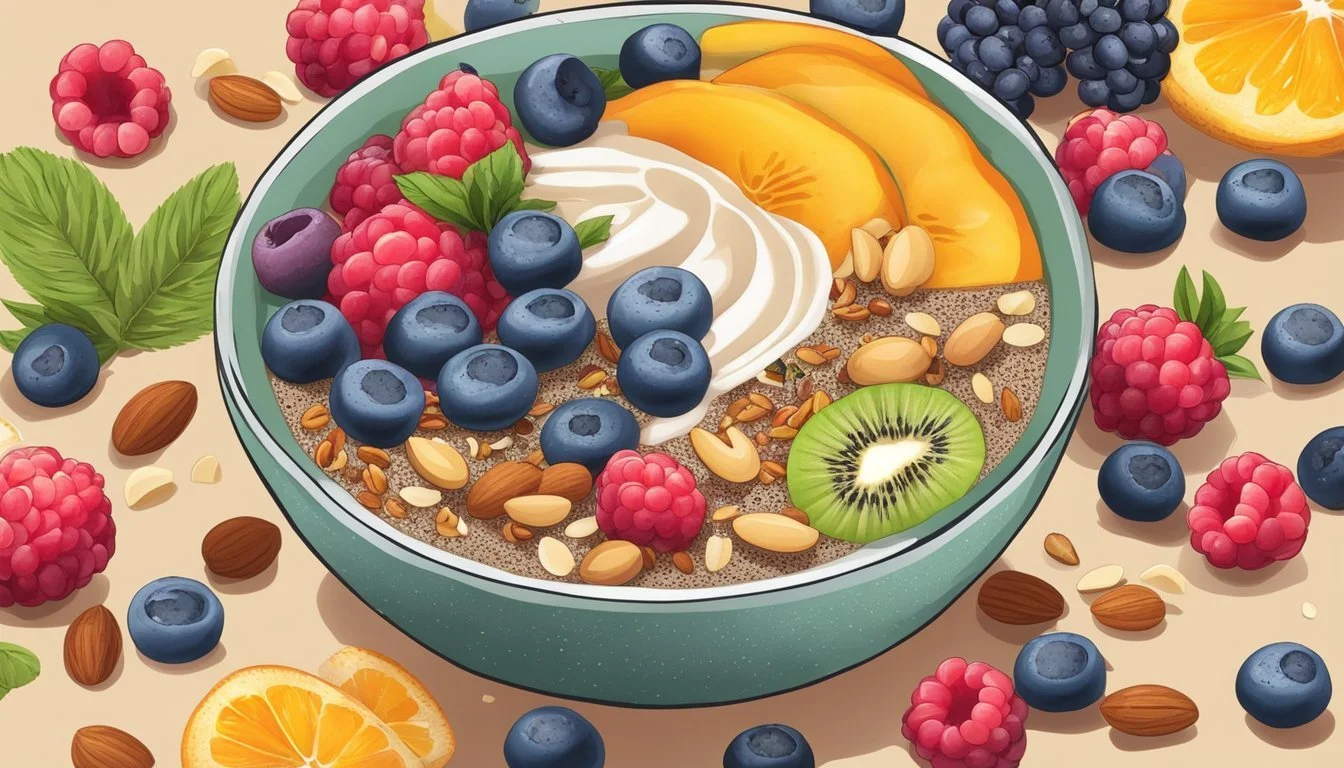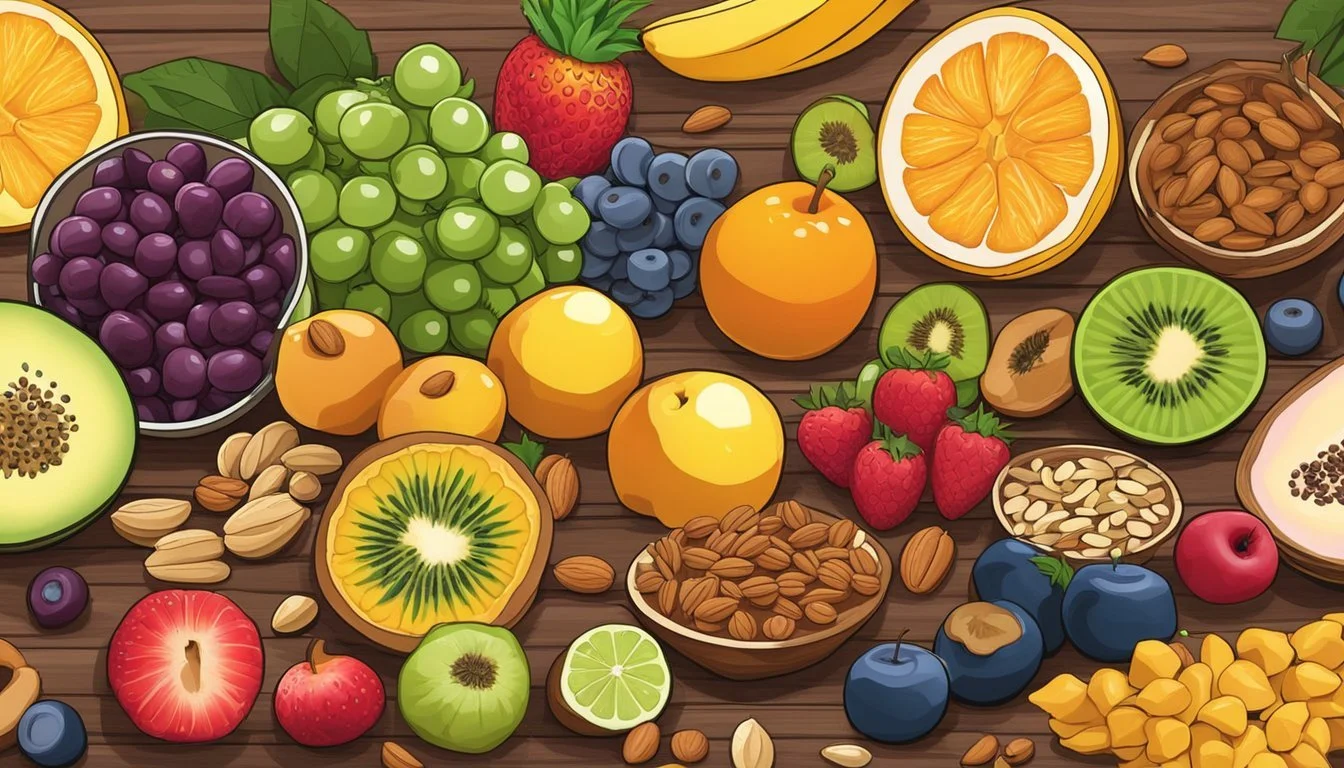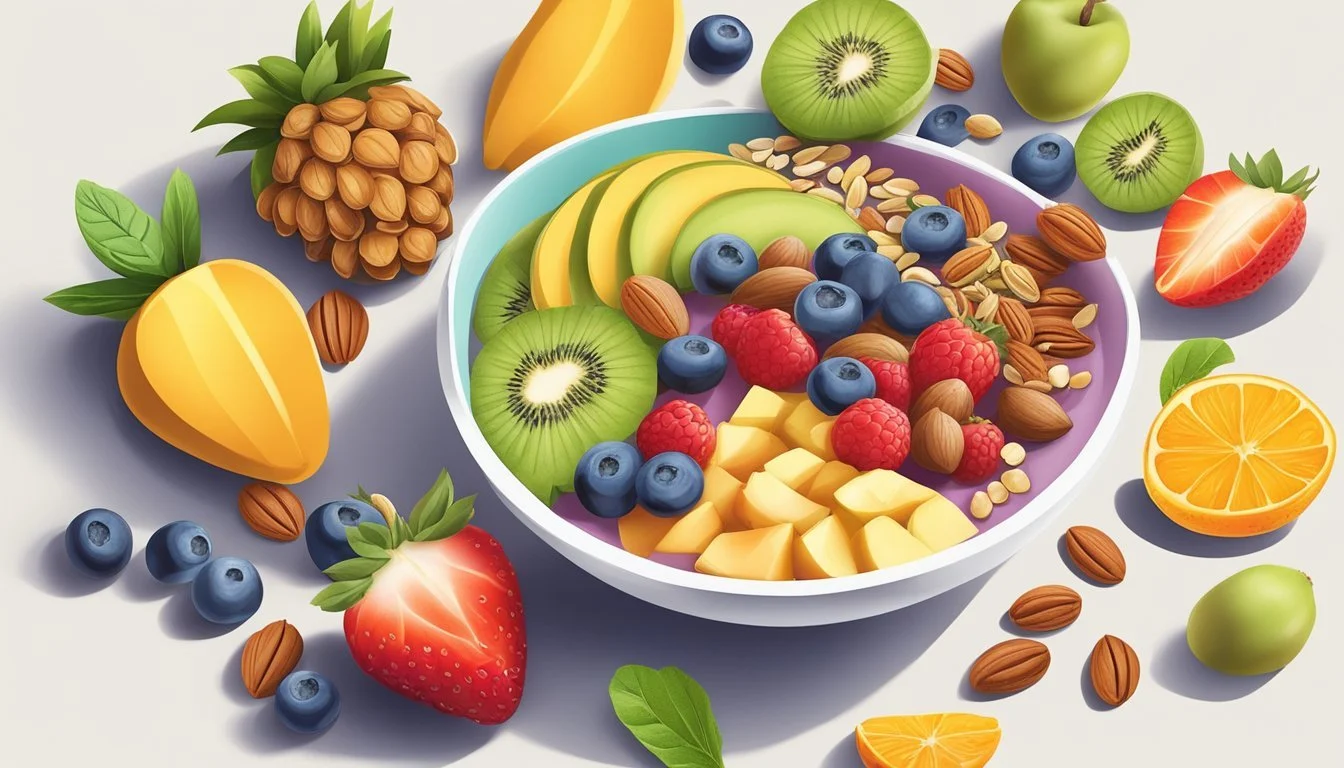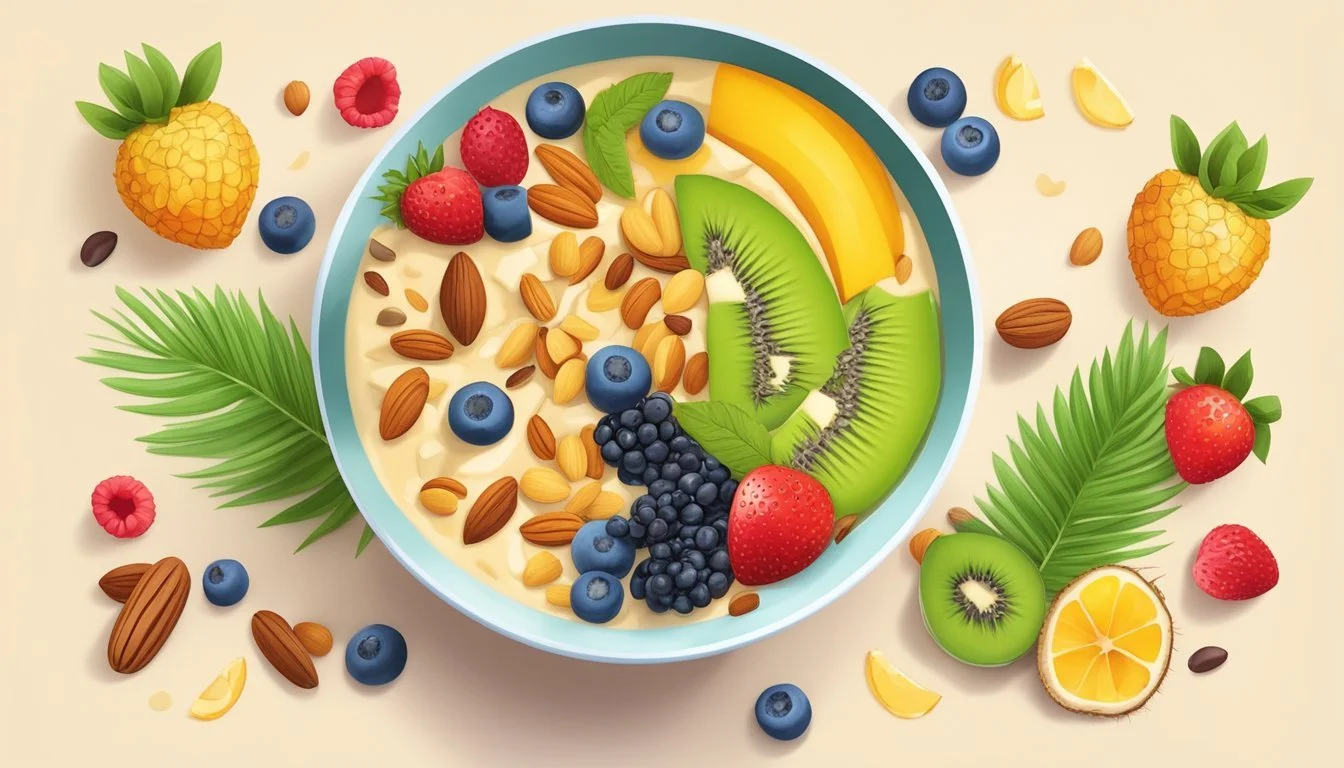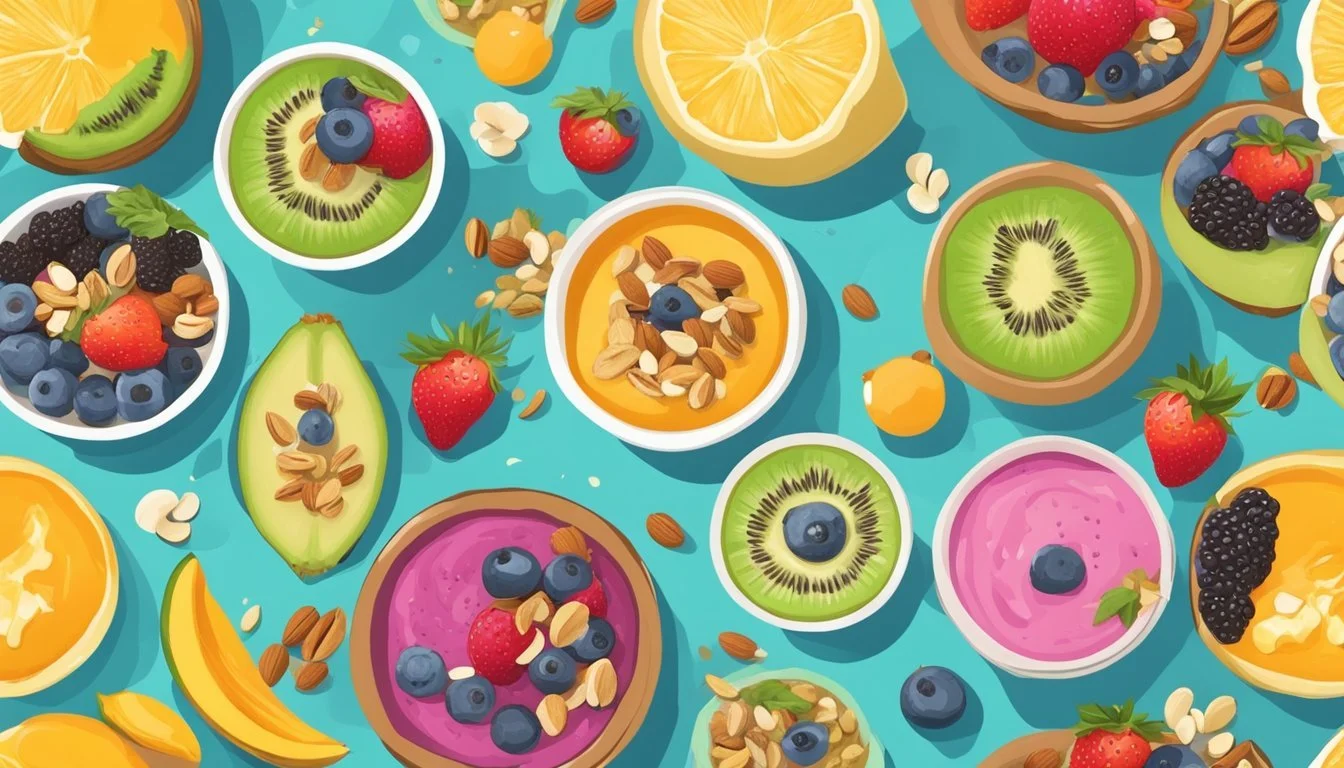The Best Paleo Diet Smoothie Bowls for Breakfast
Nutrient-Packed Morning Recipes
Starting the day with a nutrient-rich breakfast is important, and for those following a paleo diet, the options for healthy, convenient morning meals include a variety of smoothie bowls. The paleo diet emphasizes whole foods that were presumably consumed by our hunter-gatherer ancestors, focusing on proteins, fruits, and vegetables while avoiding grains, legumes, refined sugars, and most dairy products. Smoothie bowls fit perfectly within these guidelines, offering a quick and delicious way to consume a concentrated dose of vitamins and minerals first thing in the morning.
Smoothie bowls are a creative and versatile breakfast option. They can be tailored to any taste preference and can accommodate a range of dietary restrictions inherent to the paleo lifestyle. Rich in natural flavors and textures, these smoothie bowls frequently feature a blend of fresh or frozen fruits, such as bananas and berries, combined with sources of healthy fats like almond butter or coconut flakes. The addition of ingredients such as cacao powder and cinnamon not only boosts the flavor profile but also provides additional health benefits.
For those on the paleo diet, incorporating smoothie bowls into their breakfast routine is an excellent strategy. The easily adjustable recipes allow for a balance of macronutrients—proteins, fats, and carbohydrates—that support sustained energy levels and satiety throughout the morning. Whether one prefers a smoothie bowl packed with antioxidant-rich berries topped with a sprinkle of cacao powder or a green smoothie bowl with spinach and avocado, these meals can be a delightful and nourishing start to the day.
Understanding Paleo Diet Basics
In this section, the reader will be introduced to the fundamental principles of the Paleo diet and how it shapes breakfast choices, specifically focusing on the inherent benefits of Paleo-focused smoothie bowls as a morning meal option.
What Is Paleo?
The Paleo diet revolves around foods that our Paleolithic ancestors would have consumed, emphasizing whole, unprocessed items. It includes high-quality proteins like eggs, meat, and fish, along with healthy fats from sources such as avocados, nuts (What wine goes well with nuts?), and seeds. People following a Paleo diet avoid grains, legumes, refined sugars, and dairy, which are believed to be incompatible with humans' genetic makeup and may contribute to modern health issues.
Core Components of a Paleo Diet:
Proteins: Meat, poultry, fish, eggs
Healthy Fats: Avocado, olive oil, coconut oil, nuts, seeds
Vegetables: Leafy greens, cruciferous vegetables, starchy and non-starchy varieties
Fruits: Berries, apples, bananas, citrus fruits
Benefits of a Paleo Breakfast
Starting the day with a Paleo breakfast can provide a balance of nutrients needed for energy and focus. It tends to be rich in proteins and healthy fats which can lead to increased satiety and smoother blood sugar levels throughout the morning. Moreover, a breakfast high in nutrients and free from processed foods may support those with autoimmune conditions, aligning with the principles of an Autoimmune Protocol (AIP), a stricter version of the Paleo diet designed to reduce inflammation and autoimmune responses.
Essentials of a Perfect Paleo Smoothie Bowl
Creating the perfect Paleo smoothie bowl for breakfast hinges on the selection of fresh, nutrient-dense ingredients and a balance of protein and healthy fats to kickstart the day with a sustaining meal.
Choosing the Right Ingredients
For a Paleo smoothie bowl, foundational ingredients should be in line with the Paleo diet principles, focusing on whole, unprocessed foods. A mix of fruits and berries delivers natural sweetness and antioxidants. Paleo-friendly options include:
Bananas: for thickness and natural sweetness
Berries: such as strawberries, blueberries, and raspberries for flavor diversity and rich in vitamins
Avocado: not only does it offer creaminess but also provides healthy monounsaturated fats
Adding greens like spinach or kale can boost nutrient content without compromising taste. They should be used in moderation to maintain a pleasant flavor profile. Coconut products, such as coconut milk for liquid and shredded coconut for topping, supply beneficial fats and tropical flavor.
The Role of Protein and Healthy Fats
Protein is essential in a Paleo smoothie bowl as it contributes to satiety and helps with muscle repair. Natural sources of protein such as almond butter or a scoop of paleo-friendly protein powder integrate well. Paleo advocates often prioritize healthy fats, as they are vital for maintaining energy levels throughout the morning. Ingredients like avocado, nuts, and seeds are excellent sources of these fats within a Paleo framework.
Incorporating the right balance of macronutrients through thoughtful ingredient choices ensures that the smoothie bowl is not only delicious but also aligns with Paleo dietary practices, making it a wholesome, satisfying breakfast option.
Top Paleo Smoothie Bowl Recipes
When searching for the best Paleo smoothie bowl recipes, one can expect to find nutritious ingredients such as fresh fruits, nuts, and seeds, each providing a robust flavor and health benefits in a convenient and delicious breakfast bowl.
Green Smoothie Bowl Variations
A Green Smoothie Bowl often begins with a base of banana for natural sweetness and a creamy texture. They then add greens like spinach or kale for a nutrient-packed punch. For a twist, it might incorporate creamy avocado and a spoonful of almond butter. Toppings can include flax seeds for extra fiber.
Banana Spinach Bowl: A delightful mix of bananas and spinach paired with almond butter.
Kale Avocado Dream: Kale blended with avocado, garnished with nuts and seeds.
Berry Blast Smoothie Bowls
Berry Blast Smoothie Bowls burst with flavor from a combination of blueberries and raspberries. These bowls are often sweetened with a touch of honey and made creamy with coconut cream or almond milk. The berries provide antioxidants, while the coconut adds a rich texture.
Triple Berry Surprise: An assortment of blueberries, raspberries, and strawberries topped with crunchy pecans.
Exotic Tropical Smoothie Bowls
For a taste of paradise, Exotic Tropical Smoothie Bowls feature fruits like mango and pineapple. These tropical fruits blend seamlessly with coconut milk or coconut cream for a true Paleo piña colada experience without the guilt.
Mango Pineapple Fusion: Combines mango and pineapple for a tropical flavor topped with unsweetened coconut flakes.
Nut and Seed Smoothie Bowls
The Nut and Seed Smoothie Bowls bring together rich nuts such as almonds or pecans with a variety of seeds. These bowls might also incorporate Paleo favorites like pumpkin pie smoothie or apple pie smoothie recipes using roasted pumpkin seeds or cinnamon-spiced apple puree.
Pecan Pie Bowl: Mimics the flavors of pecan pie with blended bananas, almond butter, and a sprinkle of cinnamon for the pie's essence.
Each of these bowls offers a filling and flavorful start to the day, sticking strictly to Paleo dietary guidelines while energizing the body with whole foods.
Customizing Your Smoothie Bowl
When crafting the perfect paleo diet smoothie bowl for breakfast, individuals have endless possibilities to enhance flavor, nutrition, and visual appeal. One can select from a variety of toppings and adjust the texture to their preference for the ultimate personalized bowl.
Toppings and Garnishes
An array of toppings can add not only a crunch but also nutritional value to a smoothie bowl. Here are some paleo-friendly options:
Shredded Coconut: Adds a touch of sweetness and tropical flavor.
Sliced Almonds: Provide a satisfying crunch and are a good source of healthy fats.
Cacao Nibs or Powder: Offer a rich chocolate flavor along with antioxidants without added sugar.
Coconut Flakes: Contribute to the texture and are an excellent source of fiber.
Sesame Seeds: These tiny seeds are packed with essential minerals.
Mint: Fresh leaves can introduce a refreshing note.
Remember, the choice of garnish not only adds to the taste but also enhances the visual presentation of the bowl.
Texture and Consistency Adjustments
Achieving the desired texture in a smoothie bowl is key to enjoyment. Here's how to adjust it:
For a thicker consistency: Use less liquid or incorporate more frozen ingredients.
For a smoother texture: Blend your base fruits and liquids longer, or consider adding avocado for creaminess without altering the flavor profile significantly.
Tailoring these elements allows for a customized experience with each smoothie bowl, ensuring a pleasing texture to accompany the chosen toppings and garnishes.
Paleo Diet and Nutrition
The Paleo Diet emphasizes wholesome, nutrient-dense foods that align closely with the eating habits of our ancestors. This section will explore the specific nutrients that form the foundation of a balanced Paleo diet.
Understanding Macronutrients and Micronutrients
Macronutrients are the nutrients that provide calories or energy. The Paleo diet focuses on obtaining these macronutrients from unprocessed foods:
Proteins:
Sources: Lean meats, fish, eggs, and plant-based options like nuts and seeds.
Benefits: Essential for repairing tissues and can include collagen peptides, which are believed to support skin, bone, and joint health.
Fats:
Sources: Avocados, oils (olive, coconut), and fatty fish.
Benefits: Important for hormone production and brain health; includes omega-3 fatty acids.
Carbohydrates:
Sources: Vegetables, fruits, and tubers.
Benefits: Provide energy and contain fiber for digestive health.
Micronutrients—vitamins and minerals—are consumed in smaller quantities but are vital for body functions:
Vitamins: A diverse range of vitamins are found in the vegetables and fruits included in the Paleo diet.
Minerals: Nuts, seeds, and greens are mineral-rich options within this dietary framework.
The Impact of Antioxidants and Polyphenols
Antioxidants and polyphenols play a crucial role in combating oxidative stress and reducing inflammation:
Antioxidants:
Found in: Berries, nuts, dark chocolate, and green vegetables.
Function: Protect the body from damage caused by free radicals.
Polyphenols:
Found in: Tea, dark fruits, vegetables, and certain seasonings like turmeric.
Function: Contribute to gut health and may help in the prevention of degenerative diseases.
By ensuring a balanced intake of these nutrients, individuals following a Paleo diet can support overall health while enjoying a variety of delicious, satisfying meals.
Advanced Paleo Smoothie Bowl Tips
To elevate the humble smoothie bowl into a more sophisticated and satisfying breakfast option, one should employ advanced preparation techniques and incorporate superfoods for an energy boost. Here's how to optimize the nutritional value and convenience of paleo smoothie bowls.
Preparation and Storage Techniques
Creating a smoothie bowl that not only tastes great but is also convenient requires some foresight. Cook Eat Paleo and Cotter Crunch offer insights into making breakfast both hassle-free and nutritious.
Batch Preparation: Assemble ingredients for multiple smoothie bowls in advance. Portion out the fruits, nuts, and seeds, then store them in airtight containers or freezer-friendly bags. This ensures a quick and easy blend in the morning.
Overnight Storage: Some ingredients like chia seeds and oats can be soaked overnight for enhanced texture and digestibility. Combine with liquid ingredients in a jar, refrigerate, and add fresh toppings before serving.
Boosting Energy with Superfoods
To convert a smoothie bowl into a genuine meal replacement, it's important to augment the nutritional content with superfoods that provide sustained energy.
Chia Seeds and Flaxseeds: These seeds are not only a hallmark of Paleo Flourish recipes but also add omega-3 fatty acids and fiber, making the bowl more filling.
Greens and Berries: The Fitchen recommends adding spinach or kale for vitamins and antioxidants, while berries offer a sweet flavor and are rich in nutrients.
Protein Powders: Consider adding a scoop of high-quality, paleo-friendly protein powder to support muscle repair and growth, especially after morning workouts.
By utilizing these advanced tips, one can prepare smoothie bowls that are both energizing and convenient, perfectly aligning with the paleo lifestyle.
Special Considerations for Paleo Dieters
When creating paleo-friendly smoothie bowls for breakfast, individuals must thoughtfully select ingredients that adhere to the paleo framework, avoiding dairy, grains, and added sugars while focusing on nutrient density and natural flavors.
Managing Sweetness Without Added Sugars
For those following a paleo diet, managing the sweetness of a smoothie bowl without resorting to added sugars is essential. Natural sweeteners such as bananas or other fruits can provide the necessary sweetness. Adding spices like cinnamon, ginger, and vanilla extract can enhance the flavor profile without introducing sugar. For instance, a chocolate avocado paleo smoothie can attain its desired sweetness from ripe avocados and a touch of cacao powder, both compliant with the paleo guidelines.
Ingredients for Natural Sweetness:
Ripe bananas
Unsweetened apple sauce
Dates (pitted)
Flavor Enhancers:
Cinnamon
Vanilla extract
Cacao powder
Autoimmune Protocol-friendly Options
The autoimmune protocol (AIP) is a stricter version of the paleo diet that eliminates foods potentially causing inflammation. For smoothie bowls, selecting ingredients that neither trigger the immune system nor cause inflammation is crucial. A turmeric ginger smoothie made with coconut milk is both AIP-friendly and provides anti-inflammatory benefits. Similarly, a dark cherry smoothie bowl can be adapted by incorporating AIP-compliant milk substitutes and avoiding nuts and seeds that are typically excluded from an AIP diet.
AIP-compliant Smoothie Ingredients:
Turmeric (fresh or powder)
Ginger (fresh or powder)
MCT oil or coconut milk
Berries (strawberries, blueberries, blackberries)
With these considerations in mind, paleo dieters can prepare healthy breakfast smoothie bowls that not only taste great but also align with their dietary restrictions.
Beyond Breakfast: Expanding Smoothie Bowls to Other Meals
Smoothie bowls aren't just for breakfast anymore. They are a versatile meal option that can be tailored to suit lunch, dinner (What wine goes well with dinner?), snacks, and even dessert with the right ingredients and pairings.
Lunchtime Smoothie Bowls
For lunch, smoothie bowls can be a refreshing midday meal, especially when they're packed with a balanced mix of proteins, fats, and carbohydrates. Adding a scoop of protein powder or a handful of nuts can transform a typical breakfast smoothie bowl into a more satisfying lunch. Ingredients like avocado and chia seeds contribute healthy fats and fiber, which are crucial for sustaining energy levels throughout the afternoon.
Dinner Smoothie Bowls
Smoothie bowls for dinner might seem unconventional, but they offer a light yet nutrient-dense option for those seeking a meal that's easy to digest. Dinner smoothie bowls can incorporate leafy greens such as spinach or kale, along with more savory elements like roasted sweet potato or beets. Including a source of lean protein such as grilled chicken or tofu can round out the meal, ensuring it provides adequate nutrition for evening recovery.
Smoothie Bowls as Snack and Dessert
As a snack or dessert, smoothie bowls are a guilt-free alternative to more processed options. They satisfy sweet cravings with natural sugars from fruits like berries and banana, and they can be dressed up with an array of toppings such as unsweetened coconut flakes, cacao nibs, or crushed nuts for added texture and flavor. One can easily adjust the portion size to suit a midday treat or a post-dinner indulgence without compromising dietary goals.

